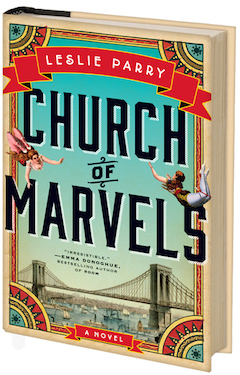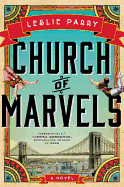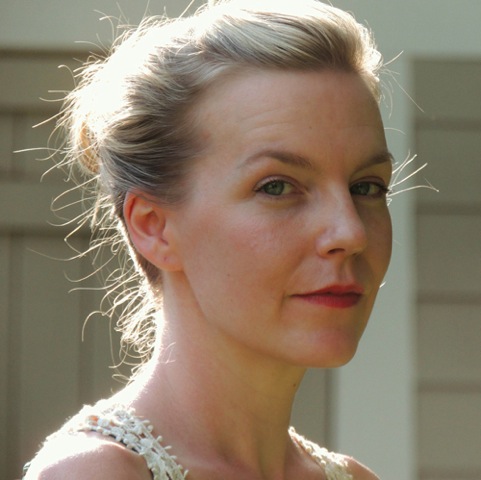Church of Marvels
by Leslie Parry
Leslie Parry's debut novel, Church of Marvels, is set in 1895, in phantasmagorical New York City, and stars a weird, lovable cast. Four protagonists share the spotlight in alternating chapters: recently estranged twin sisters Belle and Odile, orphaned loner Sylvan Threadgill, and the mysterious Alphie.
Belle and Odile's mother was the indomitable and fabled Friendship Willingbird Church, a runaway who at age 14 dressed as a boy to fight for the Union army, and later established her own circus theater on Coney Island, called the Church of Marvels. After the Church caught fire and Friendship died in its embers, Belle (ever the adventurer) left for the city with a secret that readers must wait for and wonder about. Odile stayed behind, wondering herself at her sister's abandonment. Belle writes home: "You, dear sister, have always been the brave one, the good one, the strongest of all." But Odile is not the brave one, and her sister's letter illuminates nothing about Belle's new life.
Sylvan Threadgill earns his wages as a night-soiler, cleaning out tenement privies on the Lower East Side. He moonlights by competing in fights that take place and are bet upon in back rooms and on the docks. In the novel's opening pages, Sylvan, at work one night, finds an unusual treasure in the filth: a baby girl, pale and green-eyed, "with a small nose and a dimpled chin like a pat of butter someone had stuck their thumb in."
Alphie is an undertaker's wife with a scandalous past who awakes one morning, disoriented, to find herself imprisoned in the asylum on Blackwell's Island. She is desperate for rescue, sure that her husband will come, sure that her plight is another evil trick of her mother-in-law's.
These four characters occupy separate stories for much of the book, and are joined by a colorful supporting cast. There are actors from the sideshow: a boy who is half girl, a girl with four legs, the man who throws knives at Odile as she rotates slowly on a wheel. There is the woman Sylvan turns to for help with the baby, and the very different woman Belle turns to for a very different sort of help. A strange parade of children who dwell underground put on a show for Odile when she reaches Manhattan, with implications she takes personally; Alphie's fellows, from her past life, shed a harsh light. This array is completed by the baby Sylvan liberates. An orphan himself, he is unable to turn away from her stark need. But a part-time pugilist who was never parented himself makes an inapt caretaker for a newborn.
However fantastical they may be, these eccentrics do not populate a fantasy, but a realistic, heartbreaking and sympathetic story of resilience and connections lost and found. Appropriately, the action of the novel begins with Odile's breaking character. She had found familiar if uncomfortable circus work with another theater company following her mother's death, but now leaves to pursue Belle, a journey that leads her into underground opium dens, a hothouse flower nursery curated by an enigmatic woman, and the back alleys of the tenement district. She finds an unlikely ally in her hunt for her sister, just as Belle finds her own, "in this city [where] the lights burn ever brighter, but they cast the darkest shadows." In chapters alternating among third-person perspectives, we track the movements of the four protagonists as they close in, geographically and philosophically, on the end of their individual and shared stories.
Parry's central players are each mysterious and multi-layered, and readers will receive shocking new intelligence in the final pages of this masterful novel. In gradually, teasingly unveiling myriad deceptions, Parry shows perhaps her greatest strength.
The atmosphere she evokes is both whimsical and grotesque. The gruesome, appalling asylum, roiling with violence and refuse, and the babies abandoned in privies paint a brutally harsh picture. But the free-wheeling circus performers and the Church family history contribute a note of fancy. Alphie's life story in particular provides a showcase for this dualism, where horror meets magic--she once worked on the street as a "penny Rembrandt," painting men's faces with great skill to cover up the bruises and sallowness of their dissipated nights, so that they could go home to their respectable lives. Church of Marvels demonstrates fascinating characterization and atmosphere as well as a riveting plot.
The bizarre and fanciful world contained in New York City at the turn of the last century is a playground for Parry's magnificent, alluring prose. These enchantments make Church of Marvels memorable. But it is the compelling characters, both larger-than-life and poignantly real, that exhibit beauty, wonder and distress, and will most beguile readers in the end. --Julia Jenkins








